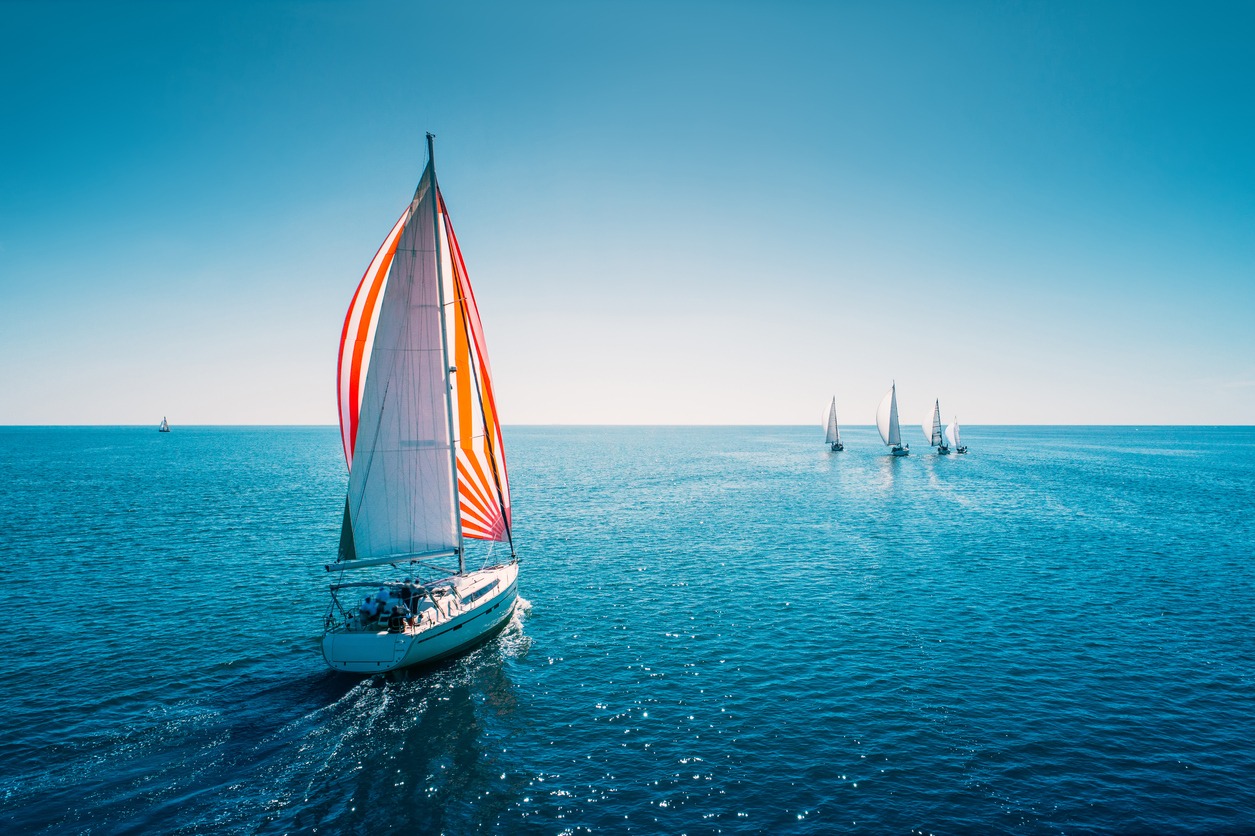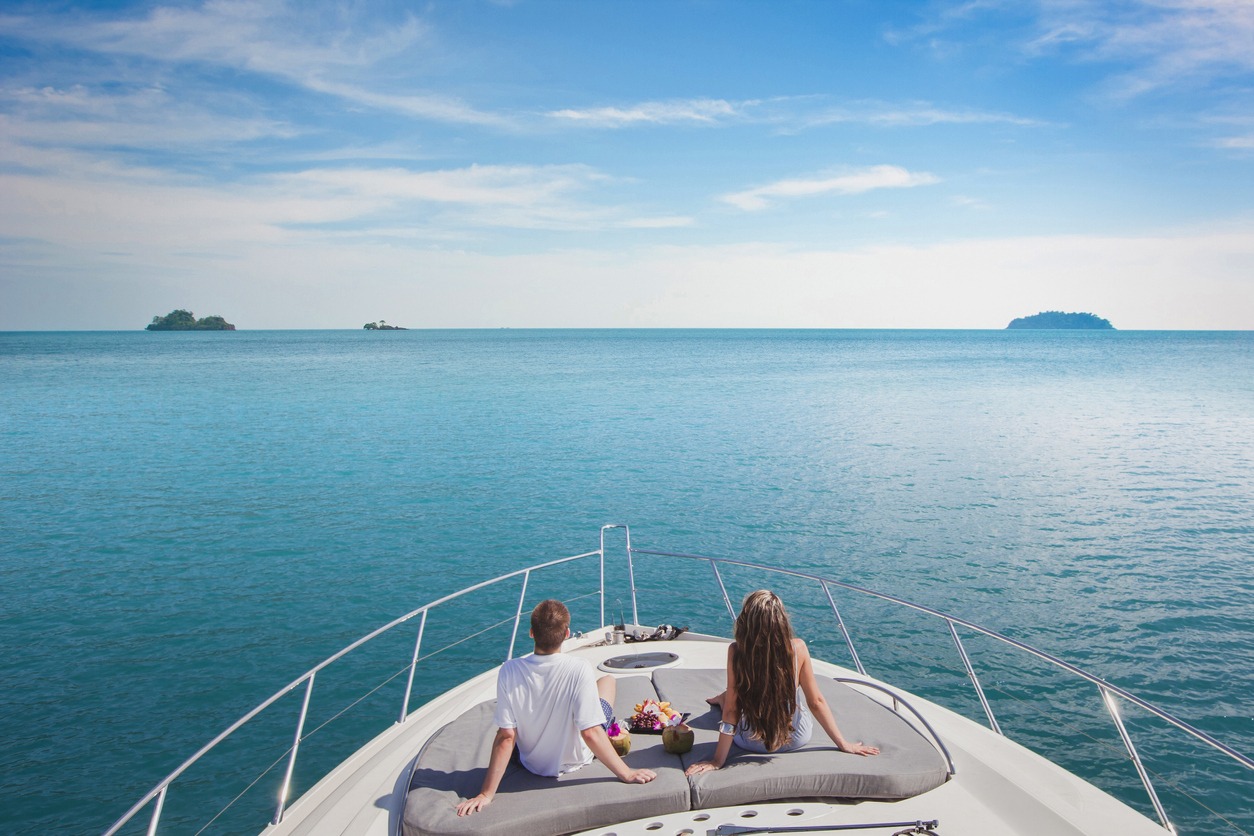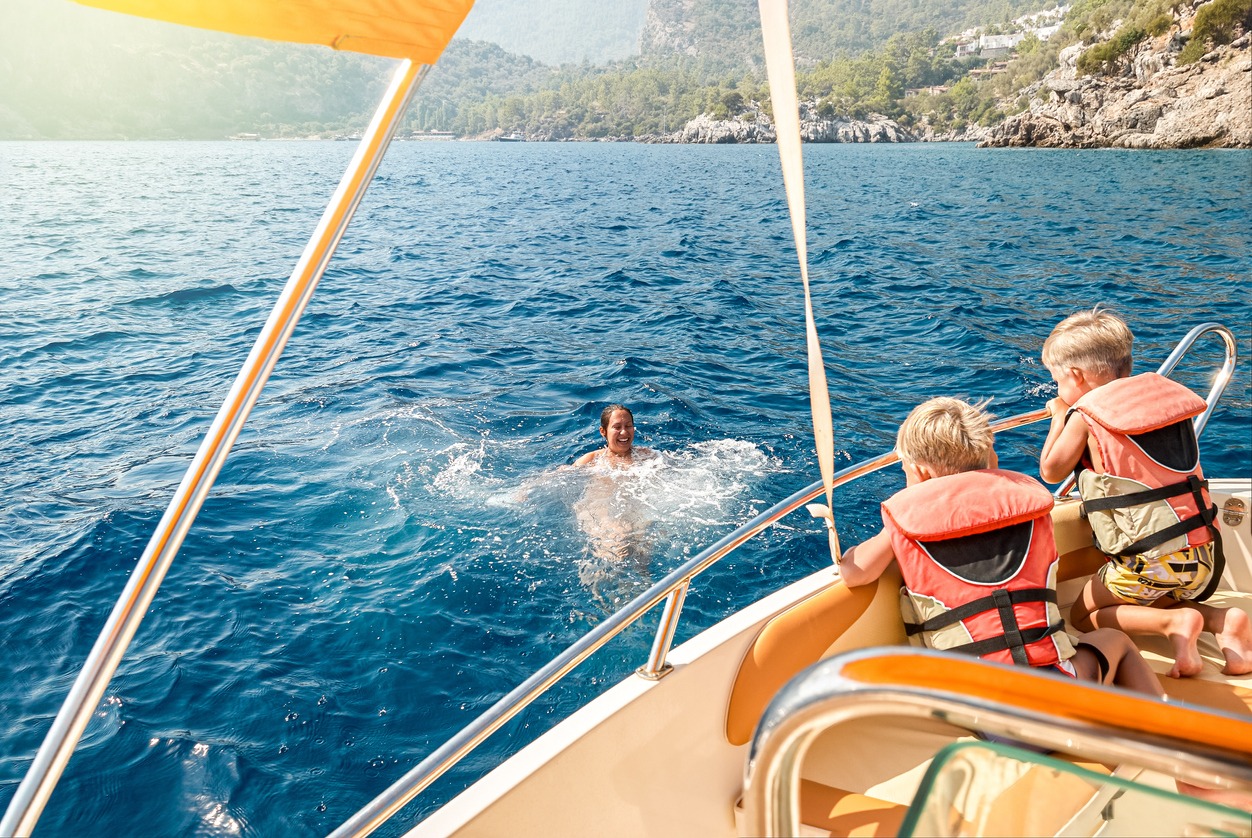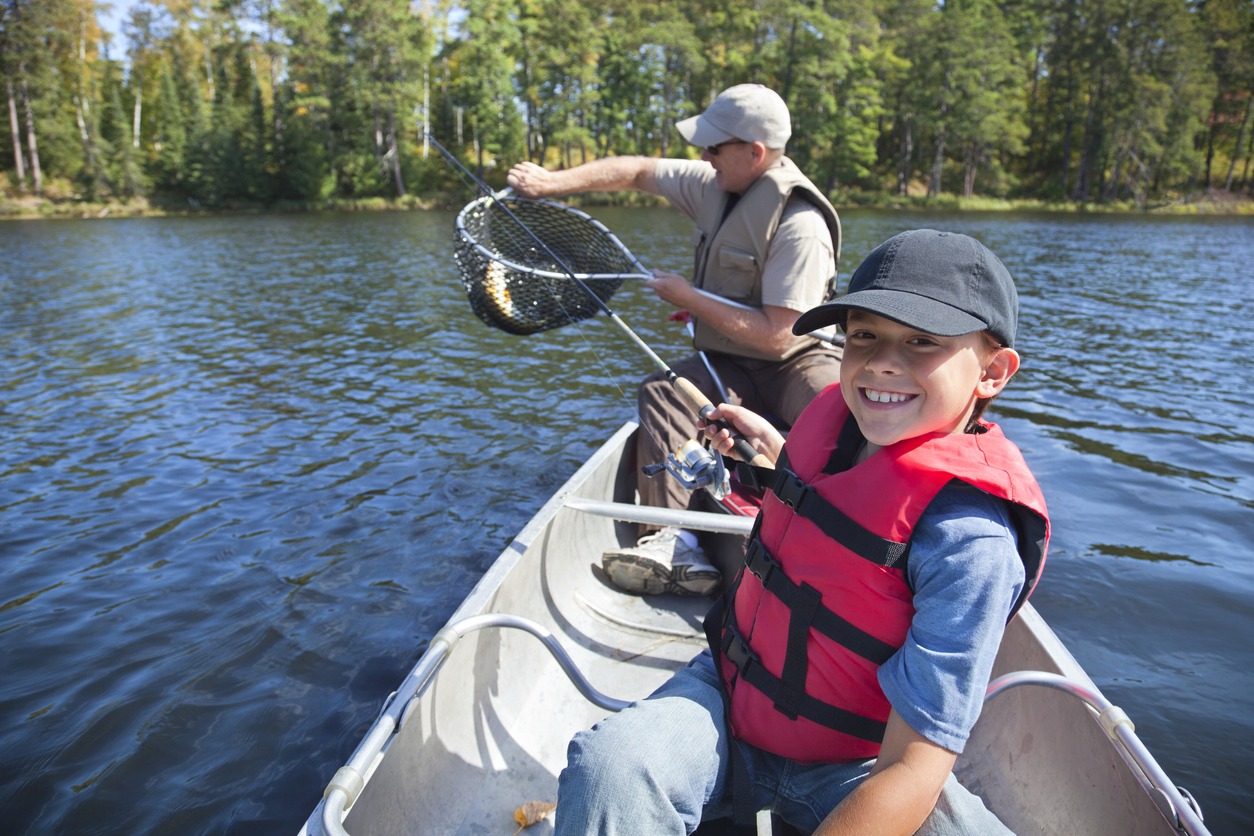“Row, row, row your boat. Gently down the stream.
Merrily, merrily, merrily, merrily, life is but a dream.”
When we were kids, the only thing we knew about boating was that you had to row gently and merrily. But it isn’t always that simple. If you have ever dreamed of gliding across the waters, feeling the wind in your hair as you propel yourself in the water, then you need a little guidance to ensure you will enjoy the endeavor. So, hoist the anchor, adjust your captain’s hat, and get started with boating by keeping in mind these helpful tips:
Start with training
Everyone has to start somewhere, right? It’s important to receive proper training before you can become a proficient boater. It’s not something that just anyone can pick up without guidance. Most people don’t just hop into a boat without any knowledge. Instead, they typically start by seeking help from a knowledgeable friend, a guide, or an instructor.
These days, finding assistance as a beginner boater is easier than ever – just a quick search online will give you hundreds of guides. That’s how you ended up here, right? Now, if you search for where to train in your area, you might come across boating clubs, marine organizations, or groups of boating enthusiasts who offer training and support. If you live near a large body of water, such as lakes or beaches, chances are you’ll find a boating club or a group that has suitable boats for training.
The best way to learn is by getting out on the water. There’s only so much reading and watching videos can do. It doesn’t matter if it’s a bay, reservoir, lake, or even the ocean. During your training, you’ll be taught the basics of boating as well as the specific type of boating you’re interested in. This includes things like terminology, wind awareness, steering techniques, knot tying, rigging, boat preparation, safety protocols, equipment usage, and various sailing maneuvers.
Get a boating license and registration
It’s an important step to take. Before you hit the water, make sure you know the requirements for operating a boat in your state. Most states have regulations that require boaters to demonstrate their knowledge of safe vessel operation, especially if they are not exempt due to age. This means you need to learn the basics of boating, such as navigation rules and how to use safety equipment. Once you’ve studied the material, you must take a test to obtain your certificate or license.
You must contact the appropriate local boating authority to obtain the necessary license. For example, suppose you are sailing on an inland waterway. In that case, most places will require a license and sailing registration issued by the relevant navigation authority, usually for a fee. Some waterways have special licensing agreements that give exclusive sailing rights to local clubs, saving club members the trouble of obtaining separate licenses.
Always check the weather before setting sail
Though we all like to go boating every time our schedule allows, it’s an activity that nature greatly impacts. It’s also something you can manage with the right knowledge. Before heading out, it’s essential to understand the local weather conditions. Keep an eye on the upcoming forecast for when you’ll be boating. Understanding how pressure changes can impact the weather is crucial, and remember to stay aware of sudden changes by observing the skies. Use common sense and prioritize safety.
Here are some tips to help you stay weather-ready:
- Check the weather the night before, in the morning, and just before you set off on your boating adventure. Be prepared.
- While a mobile phone can be a backup, always rely on a marine radio (preferably VHF) as your primary communication device on the water. It allows you to call for help and provides constant weather and safety updates.
- Have a plan to secure your boat in case of sudden rain or strong winds. Be ready to batten down the hatches and secure loose items.
- Pack emergency weather gear. Having the proper gear is better than relying on makeshift solutions like plastic bags with holes. Remember, if you’re venturing more than two nautical miles offshore, ensure your vessel is equipped with a registered 406MHz digital Emergency Position Indicating Radio Beacon (EPIRB). This is essential for safety so that you can be quickly located in the event of an emergency.
By keeping an eye on the weather and taking necessary precautions, you can enjoy your boating experience while staying safe and prepared.
Use the ramp quickly, and don’t block it
When using a busy boat ramp, practicing good boating etiquette is important. Arrive at the ramp fully prepared to launch your boat, not to load it. Complete all loading and preparations beforehand so that you can swiftly launch and move your trailer out of the way.
Never block the ramp – remember that others are also eager to get their boats in the water. To make sure you’ll get out of others’ way, practice reversing with your trailer at home to build confidence. Stay calm and avoid backing your entire vehicle into the water. Don’t unhitch prematurely and risk your boat hitting the ramp. A beginner boater must choose low-traffic times for initial excursions.
Master proper mooring techniques
Seek instruction or have an experienced person accompany you to ensure proper mooring (securing the boat in a fixed position). Avoid mistakes that can spoil your time on the lake. Make sure to approach the mooring area at the correct angle and speed.
It helps if you familiarize yourself with essential knots to avoid difficulties when casting off. Having someone on the bow to provide guidance can be a great help too. Take into account currents and drift when anchoring, especially if the water is crowded.
Start small and build confidence
When starting your boating adventures, it’s wise to start with shorter trips closer to shore. You don’t need to jump straight into long-distance cruises or overnight camping. Take it step by step and gradually increase the size and duration of your trips. This approach helps you gain confidence and learn important aspects of boating.
By starting small, you’ll discover what provisions and gear are essential for your trips. You’ll become more adept at handling different situations on the water and understand when it’s time to switch up activities. This is particularly important when boating with kids, as their needs and preferences may vary.
Get familiar with boating gadgets
Remember that your boat is a mechanical device, and it’s dependent on gadgets to operate smoothly, even if it’s small and simple. Take the time to learn about navigation, safety, and fishing gadgets to ensure a successful boating experience.
Modern technology has brought sophisticated navigational tools to boaters, such as gyro stabilizers, compasses, radars, autopilot systems, and more. Safety equipment includes lifejackets, anchors, bilge pumps, distress flares, and fire extinguishers. Fishing enthusiasts may have fish finders, chart plotters, sonars, and specialized fishing gear.
Regardless of your setup, being familiar with all the gadgets and equipment on your boat is crucial. Understanding their functions and how to use them properly will enhance your boating enjoyment and safety.
Follow the barbell pattern
The barbell pattern is a helpful technique in boating that allows you to explore and challenge yourself while staying within your comfort zone. It’s similar to lifting weights at the gym, where you start with lighter weights and gradually increase the difficulty.
If you’re new to boating, begin by setting a goal of several outings near the shore. Once you feel more confident, gradually venture further out on the water. This progressive approach helps you develop your boating skills over time. Additionally, it allows you to determine which gear is essential and which you can do without, so you can gradually build the perfect set of useful equipment.
Plan ahead and use a pre-departure checklist
When you’re new to boating, plan to have some extra preparation time before and after your trip. Having a pre-departure checklist is crucial to ensure you’re fully prepared before setting sail. This checklist will help you handle potential breakdowns and unsuitable conditions, and minor injuries that may happen on board.
While each person’s checklist may vary, some elements should be included. Make sure to check critical boat components, mechanical items, current weather conditions, safety equipment for you and your passengers, navigation aids for both day and night and more.
Boat traffic can build up, the weather may take a surprising turn, someone may get hurt, and your companions may get hungry and thirsty. You don’t want to frustrate others or give the impression that you’re inexperienced. Preparing a pre-departure checklist that covers all the necessary precautions and safety rules can help you with these situations.
Make sure you bring essential boating gear
When heading out on a boat, having the necessary gear to ensure safety and enhance your boating experience is important. Here is a list of essential boating gear to consider:
- Life jackets – Have an appropriately sized and Coast Guard-approved life jacket for each person on board.
- Throwable flotation device – Keep a throwable flotation device, such as a life ring or buoy, easily accessible.
- Fire extinguisher – Carry a marine-grade fire extinguisher suitable for extinguishing different types of fires.
- Navigation tools – Include a compass, nautical charts, and a GPS device for navigation purposes.
- Communication equipment – Have a reliable marine VHF radio or a mobile phone in a waterproof case for communication with authorities and other boaters.
- Visual distress signals – Carry approved visual distress signals like flares or an emergency strobe light for signaling distress.
- Anchor and line – Have an appropriate anchor and anchor line for anchoring the boat securely when needed.
- First aid kit – Keep a well-stocked first aid kit to handle minor injuries and medical emergencies.
- Tool kit – Include basic tools like wrenches, pliers, screwdrivers, and spare parts for minor repairs on board.
- Bilge pump – Have a manual or automatic bilge pump to remove water from the boat’s bilge.
- Flashlight – Carry a waterproof flashlight with extra batteries for emergencies or low-light conditions.
- Whistle or horn – Keep a whistle or horn as a sound-signaling device for communication and attracting attention.
- Navigation lights – Ensure the boat has proper navigation lights for visibility during low-light or nighttime boating.
- Spare fuel – Carry extra fuel in approved containers for longer trips or emergencies.
- Personal protective gear – Wear appropriate clothing, including hats, sunglasses, sunscreen, and non-slip footwear, for protection from the sun and elements.
Make sure everyone wears a life jacket
While it’s listed above, we need to reiterate that a life jacket is super essential. Wearing a life jacket may seem like common sense, but unfortunately, many people still lose their lives to drowning each year simply because they didn’t wear one, even though they had it on board. Accidents can happen unexpectedly, so it’s crucial not to rely on being able to grab a life jacket “if something happens.” It must be worn before getting on the boat.
To ensure that everyone wears the necessary flotation devices, it’s essential to check that they fit properly and are in good working condition. As part of your pre-departure checklist, inspect the life jackets for yourself and all passengers to ensure they don’t require any adjustments.
When it comes to children, it’s important to try on the life jacket and ensure there is no more than 10cm of space between their shoulders and the jacket when lifted by the shoulders. Life jackets for small children should have a head support collar and a crotch strap to provide proper safety and support in the water. Test life jackets by having a child wear one in a pool and teach them to swim on their back while wearing it.
Decide which activities you want to try
While making a pre-departure checklist, consider the activity you want to try on the boat. Maybe a couple of your family members would like to wakeboard. The dad may want to teach everyone how to fish. Or perhaps, the kids would want to try snorkeling. Before the trip, gather around the kitchen table for a family meeting to discuss all the exciting options. Depending on the location of your boating trip and the type of activity you want to embark on, there are also water sports professionals that you may want to hire for guidance.
Once you’ve decided on your action plan, list any boating accessories you may need. This way, you’ll be fully prepared for all the thrilling wave-hops, laughter-filled towing, and satisfying fish-catching that awaits you.
Create a float plan
Having a float plan is a fundamental aspect of boating. It serves as a guide for someone you trust to initiate a search if you fail to check-in. The purpose of a float plan is to ensure that someone is aware that you’re out on your boat and when you expect to return.
By leaving a float plan, you provide peace of mind knowing that someone will eventually come looking for you if you encounter unforeseen circumstances like a mechanical issue or communication problem while stranded on the water. Make sure to inform your designated contact person when you embark on your boating trip, and remember to notify them once you’re safely back onshore.
Plans have proven to be lifesavers in the past, helping locate missing boaters and preventing potentially dangerous situations. Don’t find yourself in a situation where you must devise an agonizing escape plan because nobody knows your whereabouts or what might have happened.
Dress appropriately
Proper attire is crucial when boating, whether you’re exploring small waters or venturing out to the coast. The temperature on land can differ significantly from the temperature on the water, and sudden weather changes can cause a rapid rise or drop in temperature. That’s why dressing in layers is a top tip for every new boater.
Start with lightweight athletic wear or similar fabrics as your base layer. Then, layer up with a T-shirt and shorts, followed by sweats or windbreakers. This way, you’ll stay comfortably warm initially and have the flexibility to remove clothing as the day progresses and the temperature changes.
Pack ample food and water
For those embarking on extended boating trips that last a whole day or even multiple days, ensuring you have enough food and water on board is important. There are no stores or drive-through restaurants in the water, so pack what everyone likes to eat. It’s always better to have more supplies than you initially estimated, with a comfortable margin.
If you plan to be out for a day, ensure you have provisions for two days. If your adventure spans a week, make sure you have enough supplies for ten days, considering the number of passengers you’ll have on board. Remember that more passengers will require a more significant quantity of supplies.
Learn how to adjust the trim
Once your boat is up and running, take some time to play with the trim settings and discover its “sweet spot.” Many novice boaters overlook the importance of trimming because their boat appears to be running fine. However, by experimenting with the trim, you’ll often find that it can perform even better. Trimming affects how your hull interacts with waves, influences speed and maneuverability, and can significantly enhance or reduce the comfort of your ride.
Since each boat responds uniquely to trim adjustments, incremental changes are the best way to find the sweet spot. Gradually adjust the trim and observe how your boat reacts. If you’re unsure about the concept of trimming, refer to a guide on how to trim a boat to deepen your understanding.
By mastering the art of adjusting the trim, you can optimize your boat’s performance, enjoy smoother rides, and enhance your overall boating experience.
Take it slow when docking
When it comes to docking your boat, whether it’s small or large, remember that every boat has inertia and momentum once it’s in motion. This means you need to exercise extra caution when maneuvering in tight spaces, such as a boat dock. Going at slower speeds has its advantages, like minimizing damage from bumps and scrapes, but your goal should be to dock smoothly and safely.
To start off on the right foot, make sure you’re following any “no wake” signs, which require you to maintain a manageable speed near the dock. This helps reduce the chances of encountering problems. Instead of making sudden and large corrections, opt for small and gradual movements, which allow for better control and precision.
When you see an approaching wave, slow down
When boating, it’s important to remember that the experience of hitting a wave is different for the captain compared to the passengers, especially on longer boats where the captain is near the back. While the captain may feel slight bumps, the passengers might feel like they need a chiropractor. To avoid this, simply slow down when approaching waves, and the problem should resolve itself.
Always try to approach potentially unsafe wakes as close to perpendicular as possible. Large wakes have the potential to swamp smaller boats, and if taken at a shallow angle, they can even capsize your boat while it’s in motion.
Get everyone on board involved
Getting everyone involved on a boat is not only a great way to keep passengers engaged and interested in the journey, but it’s also a clever trick to keep kids and teens occupied and out of their hair. By assigning tasks and responsibilities to everyone, you’re ensuring that your boat runs smoothly and building teamwork for your family or the group you’re onboard in.
Another wonderful aspect of boating with friends or family is the opportunity for bonding. When you work together as a team during a boating adventure, friendships deepen, and family members develop a sense of cooperation that can be hard to find in our busy daily lives.
To get the whole crew involved, others specific jobs. Boating naturally fosters teamwork, and as the captain, it’s important to provide everyone on board with an opportunity to lend a hand. Even the youngest members can participate by assisting you in keeping an eye out for any debris in the water as you sail.
Lower the anchor into the water slowly
If your boat has a hand-operated anchor, it’s important to slowly lower it into the water. Anchors are often heavy and sink rapidly once submerged. They are designed to provide significant resistance in the direction of the rope.
Keep the anchor line coiled to avoid any backlashes or snags when dropping the anchor. Remember, the line will unravel quickly. Be cautious not to let it loop around your fingers, as it can cause severe injuries. In some cases, the line may wrap around an arm or leg, leading to more serious consequences like losing a limb or even being pulled overboard. So always exercise caution when handling the anchor and its line.
Use common sense
When you’re out on the water, trust your common sense. Remember what you’ve learned throughout your life and during your beginner boater training. Follow the rules and listen to your instincts.
Maintain a safe speed, be aware of buoys, and steer clear of large vessels that have limited maneuverability. If there’s an emergency, designate someone knowledgeable about boat operations and safety to take control and guide the boat back to shore.
Avoid alcohol when operating a boat, as the wind and sun intensify their effects. Make sure you’re a strong swimmer before going boating. Then starting out, choose ideal boating destinations like accessible lakes with calm waters, extensive shorelines, no current, and a sense of tranquility.
Conclusion
Now that you have these beginner boating tips, it’s time to embrace the fun and adventure. Enjoy your time on the water, and remember to wave at fellow boaters. You’ve become part of a new family that shares a passion for boats and boating. Waving is part of the boating etiquette and the joy of being out on the water. Get ready to have a fantastic time!




